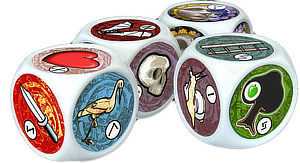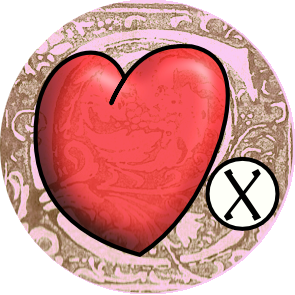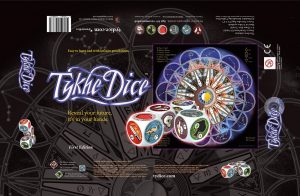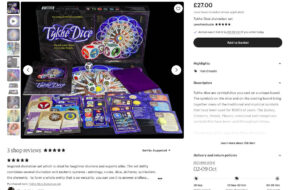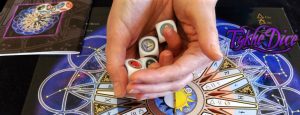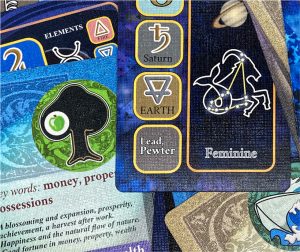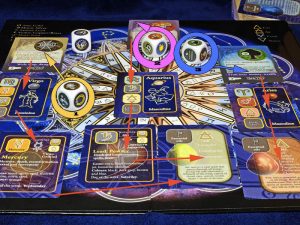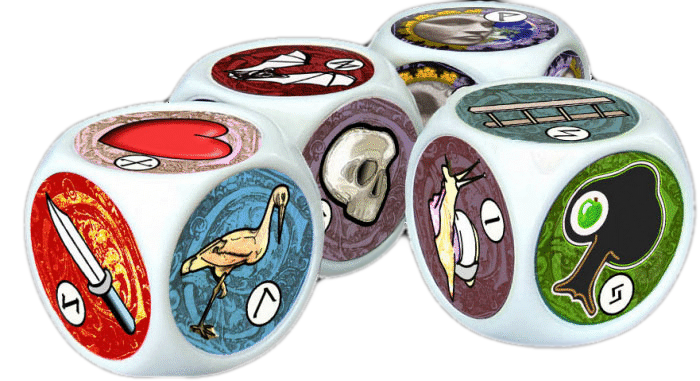
What do the symbols mean?
Tykhe Dice uses 18 symbols, each represents a key element of life. These symbols have been used for many centuries in many forms. They may appear simplistic but they represent real events, real emotions, both good and bad. Being easy to understand and relate to is their purpose. Not magical or mystical symbols, just truth, simplicity and transparency.
In any cast a combination of aspects are presented before you. That is where a reading begins.
The Symbols
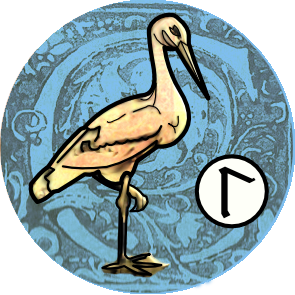
Taking the Stork as an example, this is how each of the symbols have been arrived at.
Each symbol has been in use for centuries. The symbol of the Stork to represent children, birth, creativity, new life, astuteness. It is important in Tykhe Dice that we have ‘associations’ each of us already know their meaning. This will be slightly different for each person but it is a common ‘symbol’.
How this symbol is created
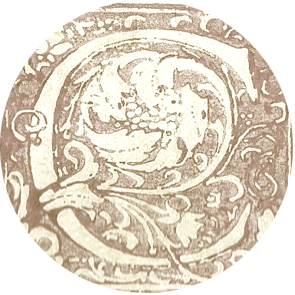
All of the Tykhe dice symbols begin with this layer. It is a woodcut commonly used for centuries. This is taken from an old woodcut block which was printed ‘as is’ from that block. It is not a perfect block and has been used many times. The symbol (a letter C) is the cleansing layer for the modern Tykhe die. Tykhe is also written Tyche with a ‘c’ though the letter ‘c’ does not appear in the Greek alphabet. The letter ‘c’ being added by the Roman Empire and adopted into our modern language. So Tykhe and Tyche are both represented on our dice.
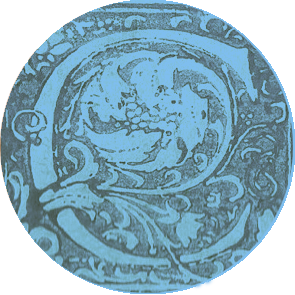
The next layer or veil is the harmonious colour of the symbol. In this case blue, which is both sympathetic and in association with this symbol.
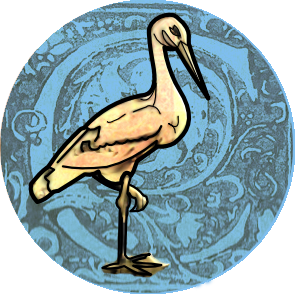
The next layer is the symbol itself. It is simple and easy to identify as a Stork. It now rests on the underlying layers which are allowed to blend with it. The three veils are still visible, where possible.
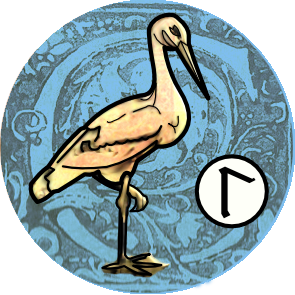
Finally the ‘rune’ aspect is attached to the die. It is not a veil, it is not associated with the symbol or the underlying layers. It is opaque and seperate. In Tykhe Dice it is a separate thing. There was never intended to be any association between the rune and the symbol. Runes on the Tykhe set and board are used in a different way.
Symbol’s meaning (from the booklet )
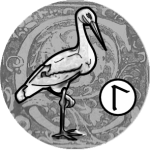 Stork: Symbolic of children, birth, Goodness.
Stork: Symbolic of children, birth, Goodness.
Key words: Fertility, beginnings, birth, inventiveness, ingenuity, loyalty.
A messenger a bringer of light, a symbol of duty and care, new plans and ideas will lead to greater productivity, possibly shorter journeys and small messages.
All of the symbols are explained in the enclosed booklet that comes with a Tykhe Dice set. The booklet is packed with fascinating and useful information. It will give you a very sound understanding of how Tykhe Dice fits into traditional divination. In addition, a quick reference is printed on the back cover of the booklet.
Here begins your understanding of the dice, the board, the symbols, the arrangement…and most importantly…yourself and the inner you.
A little symbolism we all know: Tykhe Dice Heart & Valentine.
February 15th, time for the Roman festival ‘Lupercalia,’ this appears to have been an incredibly raucous affair with naked young men gripping goat or dog-skin whips and spanking young maidens with the view to making them more fertile! ‘Lots’ were also drawn with couples being ‘coupled’ up for the duration of the festival…or longer if the match worked.
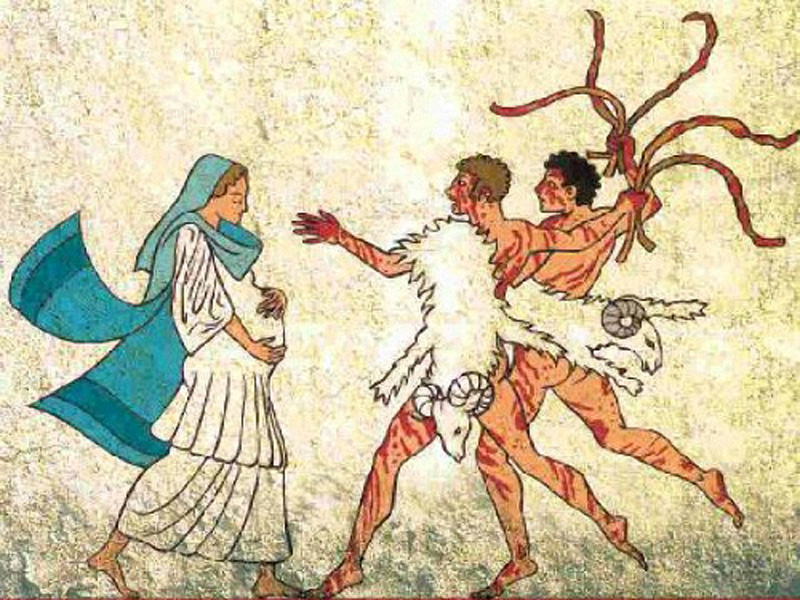
‘Lupercalia,’
remained wildly popular up until the 5th Century CE, a good 150 years after Christianity became the official religion of the Empire. Perhaps not surprisingly the Christian church found this behaviour unacceptable and took steps to curtailing this carnal festival. In response, the legend of Saint Valentine is pegged to the festival date; the drunken revelry continues but the nakedness is stopped. Lust and fertility were another matter, it remained, it would appear this compromise was accepted.
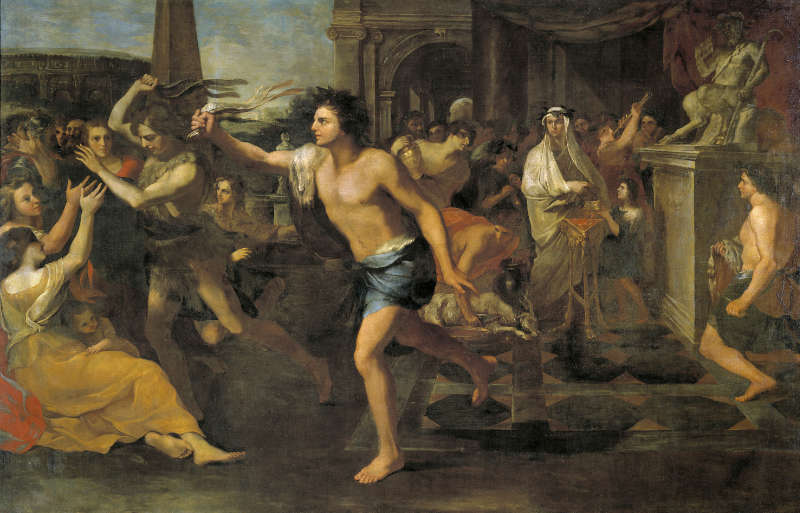
Lupercalia aka St Valentines and its link to romance cannot be found again until the 14th Century in
Geoffrey Chaucer’s, Parliament of Fowls:

‘There sat a Queen who was more lovely by far than any other creature, just as the summer sun outshines the stars. This noble Goddess nature sat enthroned in a pavilion she had wrought of branches upon a flowered atop a meadow. And there was not any bird born of love that was not ready in her presence to hear her and receive her judgement. For this was Saint Valentine’s Day. When all the birds of every kind that men can imagine come to chose their mates.’
arianllwynog
